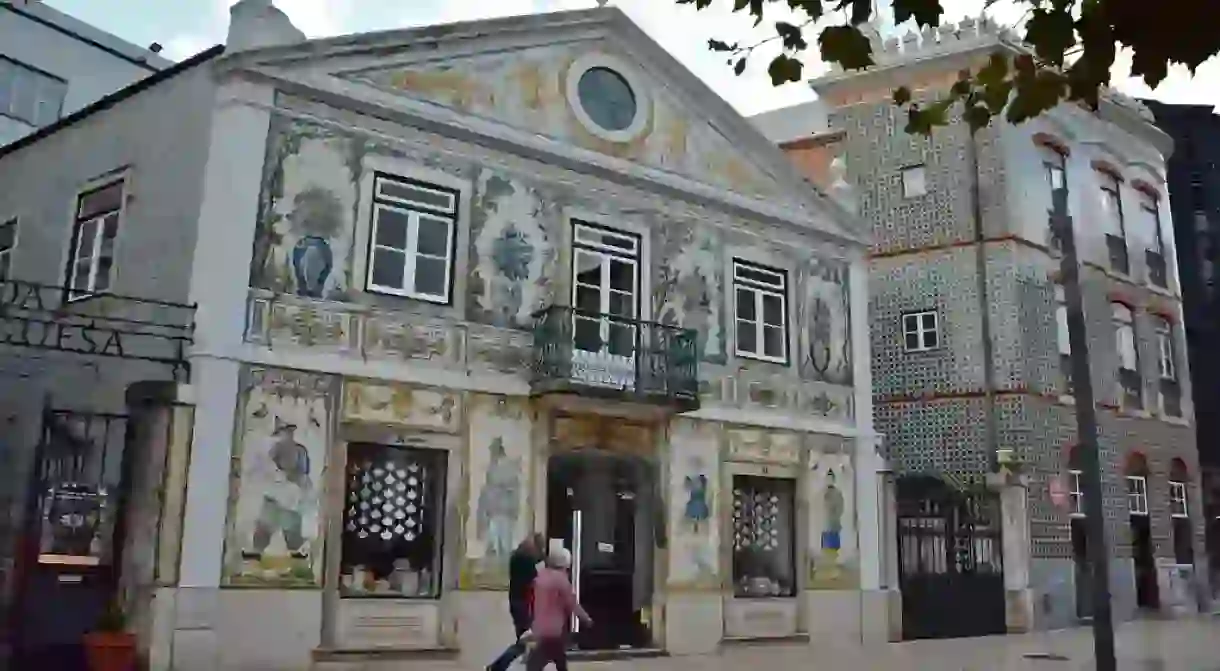The Best Places to See Portuguese Azulejos in Lisbon

When on a hunt to find the best azulejo mosaics in Lisbon, where do you begin? The answer can be as broad as anywhere and everywhere! There are always beautiful corners to discover, especially for those inclined to venture further than the limits of the city center. Take some time to head out on a walking tour but be sure to include these locations on your route for a glimpse of the city’s best, most beautiful, and/or most unique azulejo decor.
Fronteira Palace
*Tip: If using the metro to navigate the city, take the blue line to the Jardim Zoologico and walk 15-20 minutes to the palace.
Monastery of São Vicente de Fora
Bridge, Building, Church, Monastery

*The Monastery is an excellent spot for breathtaking views of the Tagus River and April 25 Bridge.
The André Saraiva Mural in São Vicente de Fora
After the monastery, head downhill and towards the National Pantheon (another stunning landmark and historic must-see). The André Saraiva mural is an explosion of color that makes it hard to miss and is the largest piece of urban street art in the city too, made up of 52,738 hand-painted tiles. The mural wraps around one side of the Feira da Ladra, the city’s oldest flea market that runs every Tuesday evening and Saturday morning, but plan a visit when the flea market isn’t operating to truly appreciate each bright detail.
National Azulejo Museum
Due to an out-of-the-way location, the National Azulejo Museum is easy to overlook, which is a shame since it’s the only museum of its kind in the entire country. Set aside 1-2 hours to walk through each room, all housed in a 16th-century convent. This is undoubtedly the best place in Lisbon to see azulejos and learn about their evolution in terms of use and creativity.
*Tip: Regular tickets cost €5.
R. Me. Deus 4, 1900-312 Lisboa, Portugal +351 21 810 0340

Fabrica Viuva Lamego
Set in the multicultural Intendente neighborhood, the beautiful facade of the Fabrica Viuva Lamego will stun passersby without even entering the shop, but if you have the time for perusing the store, head inside. The tiles are actually produced in Sintra and the Lisbon shop, which opened in the mid-1800s, usually has a handful of stunning displays representing both traditional and modern expressions.
Largo do Intendente Pina Manique, 1100-088 Lisboa, Portugal +351 21 231 4274

Jardim da Quinta dos Azulejos
Who else knew that Lisbon has its own “secret garden”? Take a stroll through the garden at the Quinta dos Azulejos, or “Estate of the Azulejos”, located in north Lisbon. To reach there, hop on the 703 bus and get dropped off around the corner or take the yellow metro line and get out at Ameixoeira stop. Then it’s only a 20-minute walk to reach this beautiful, azulejo-panoramic sanctuary.













